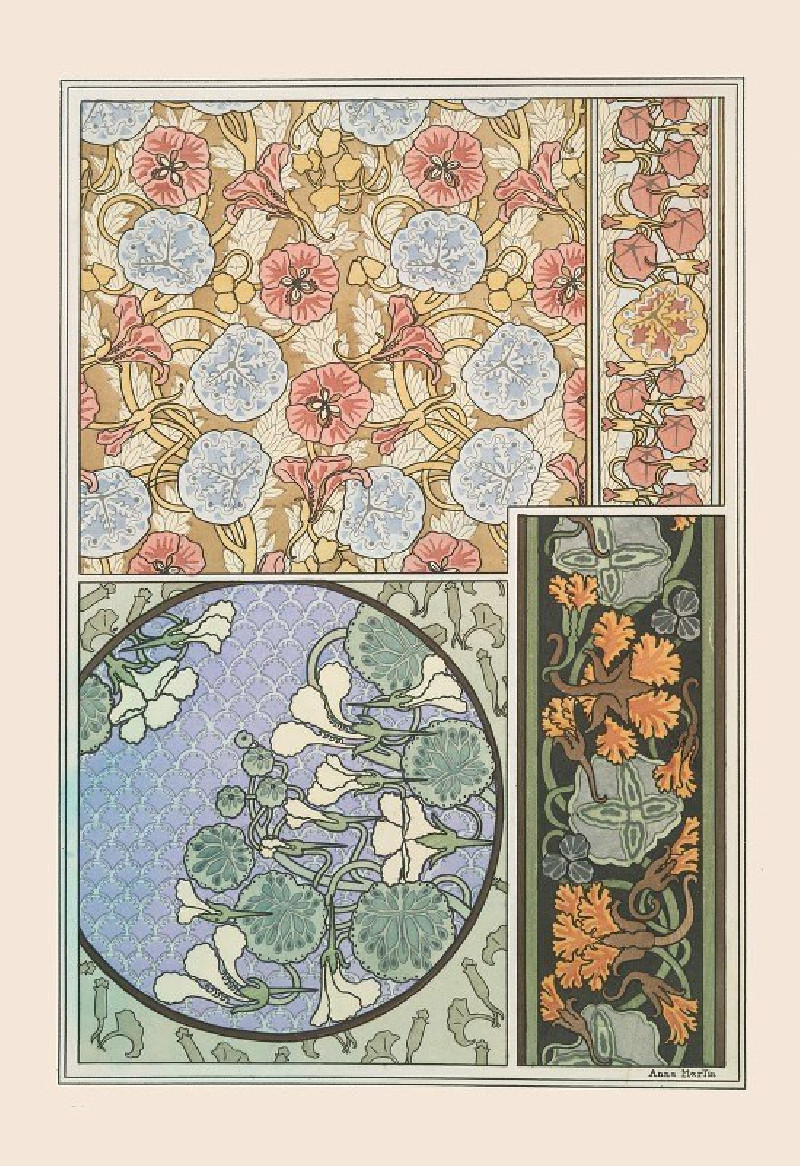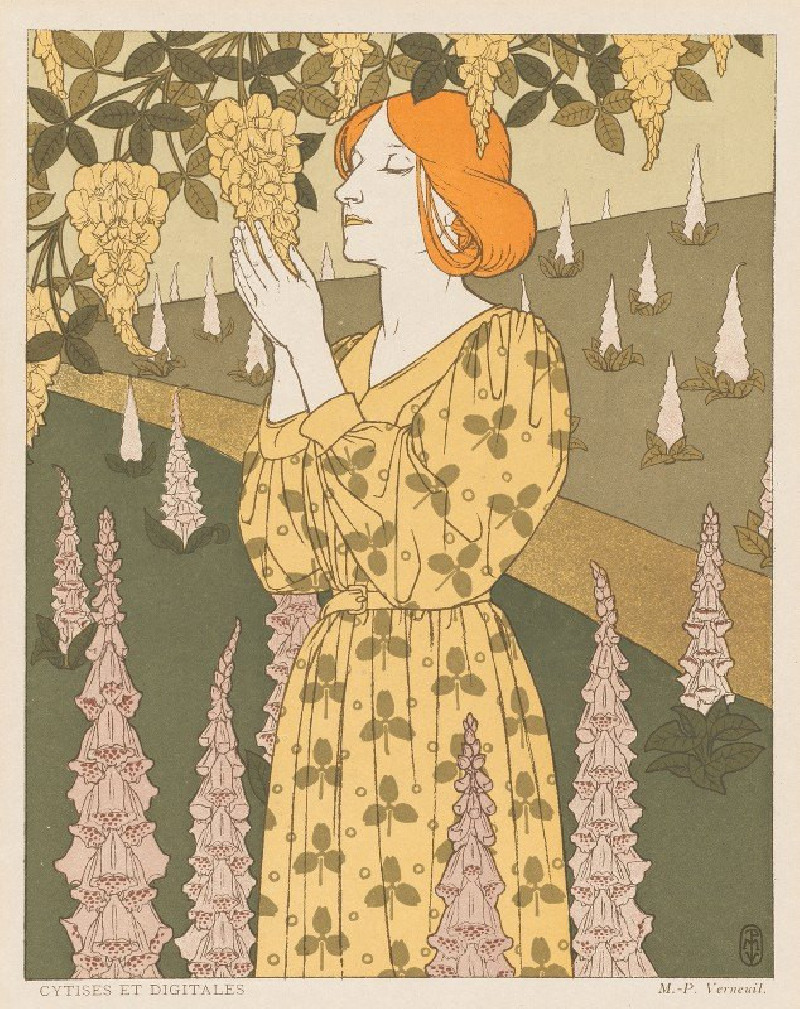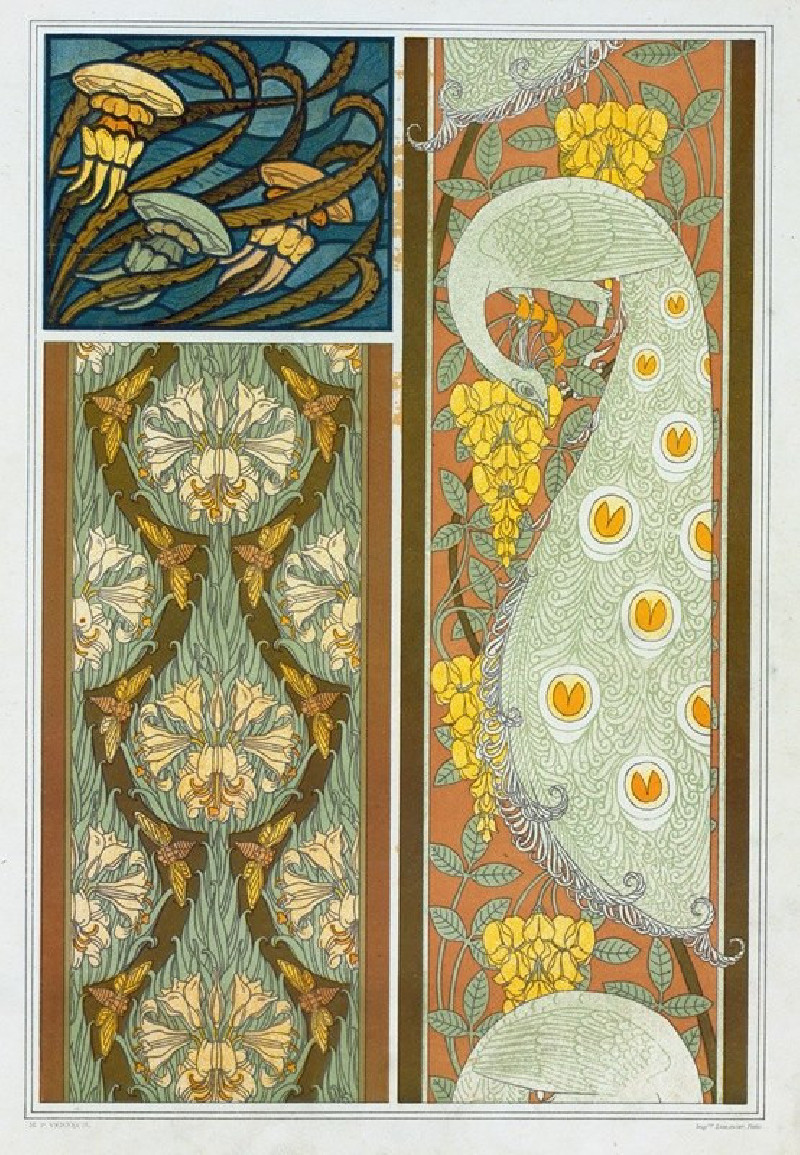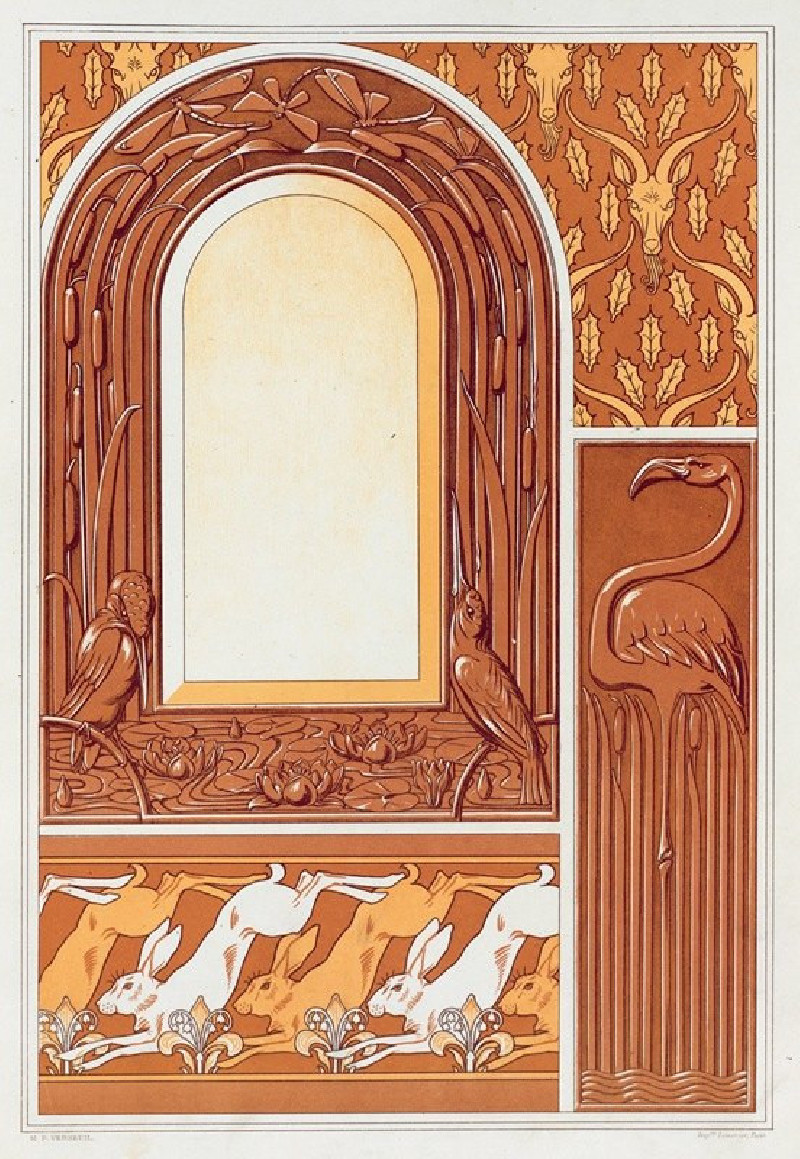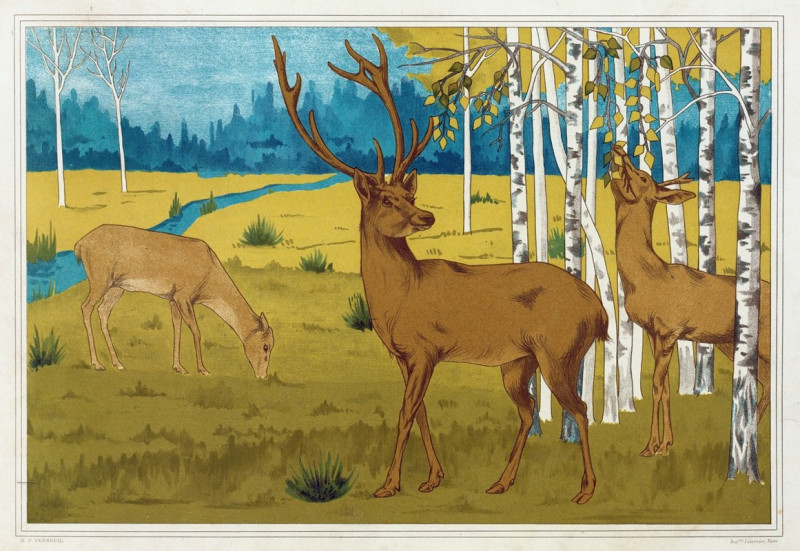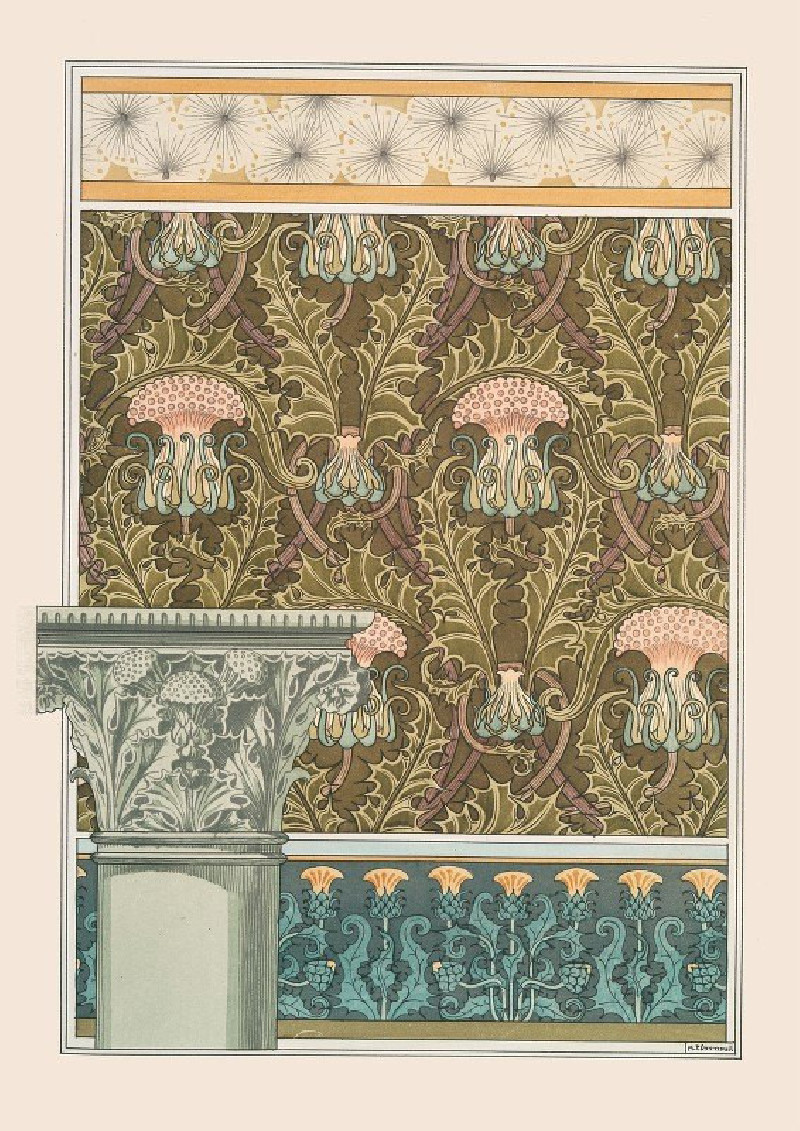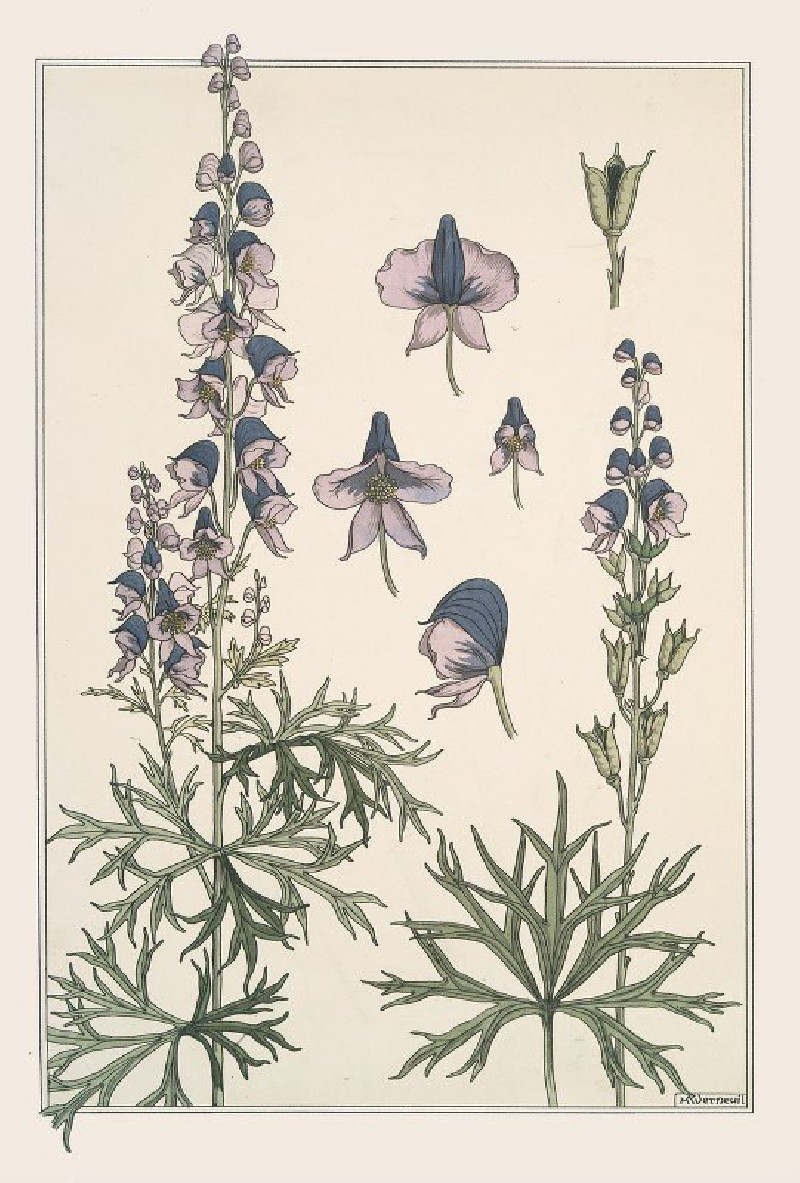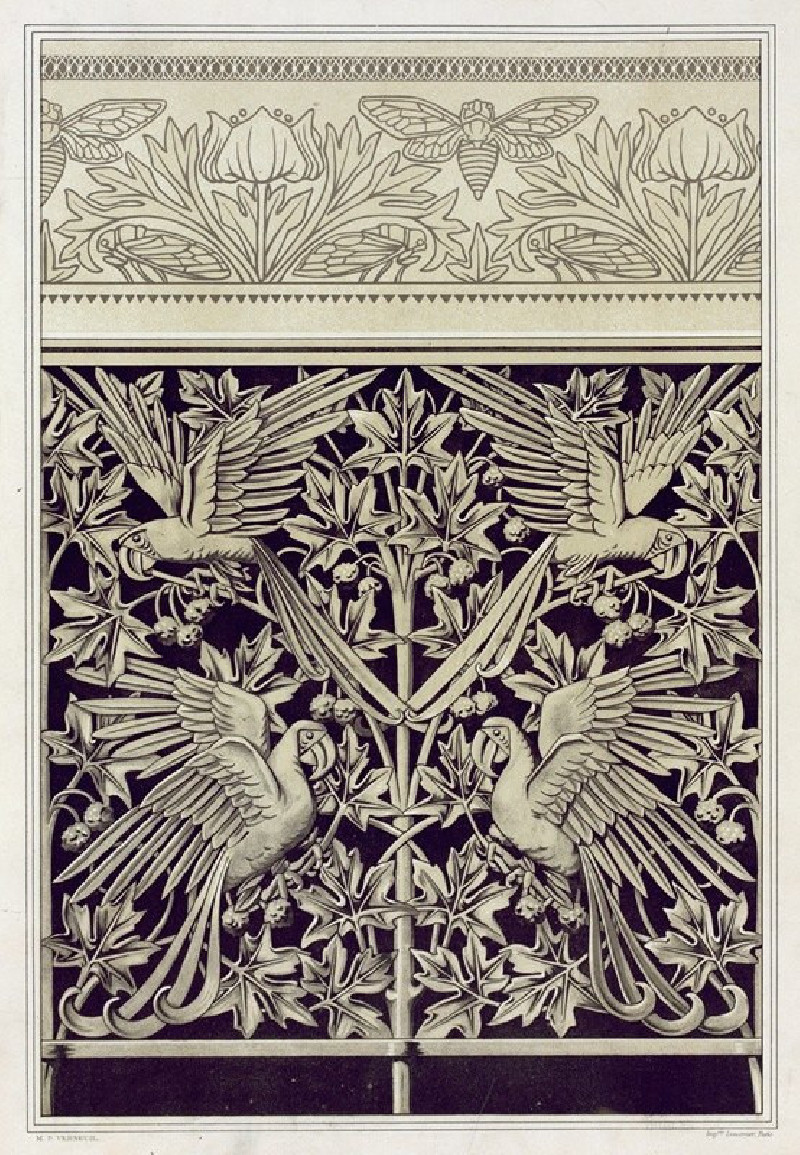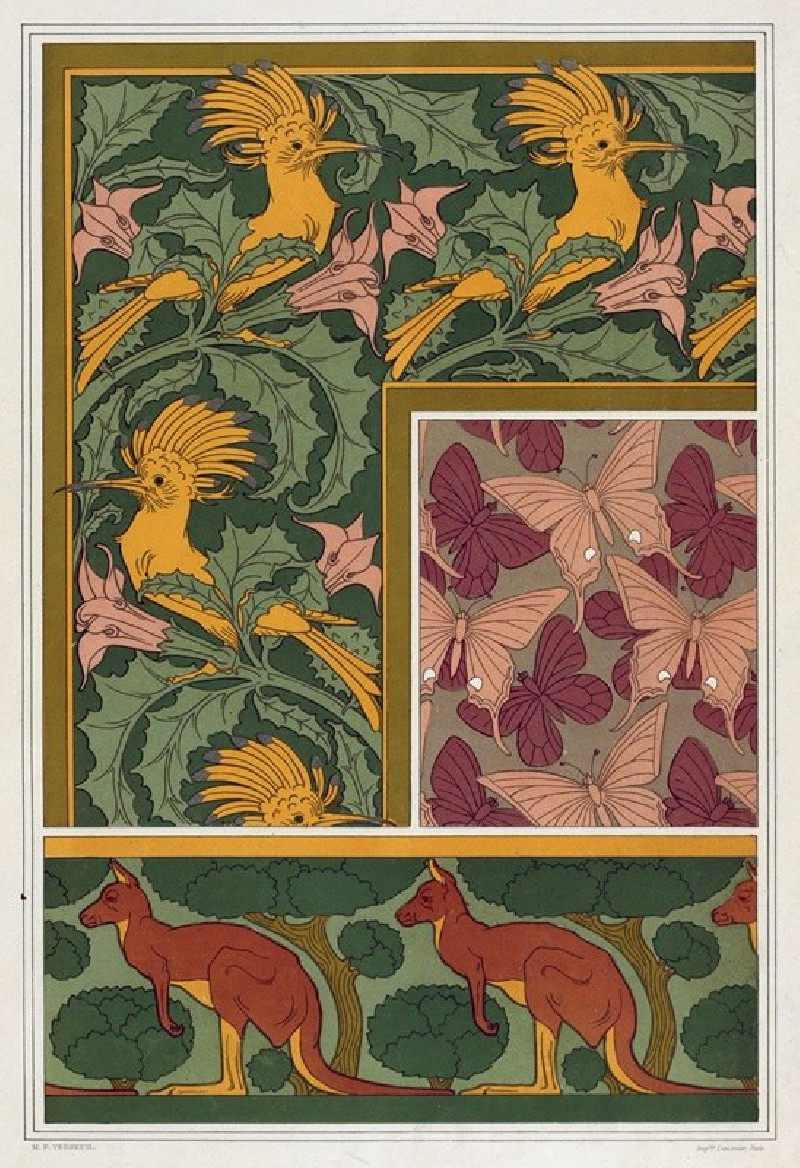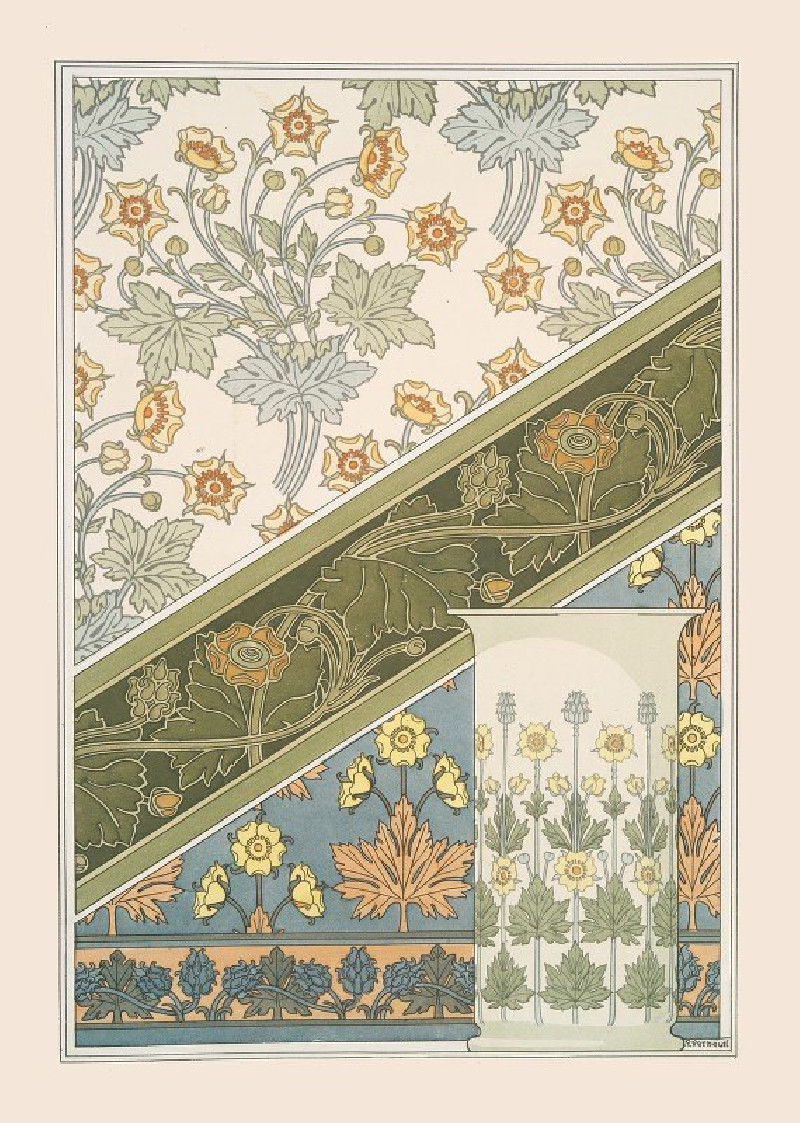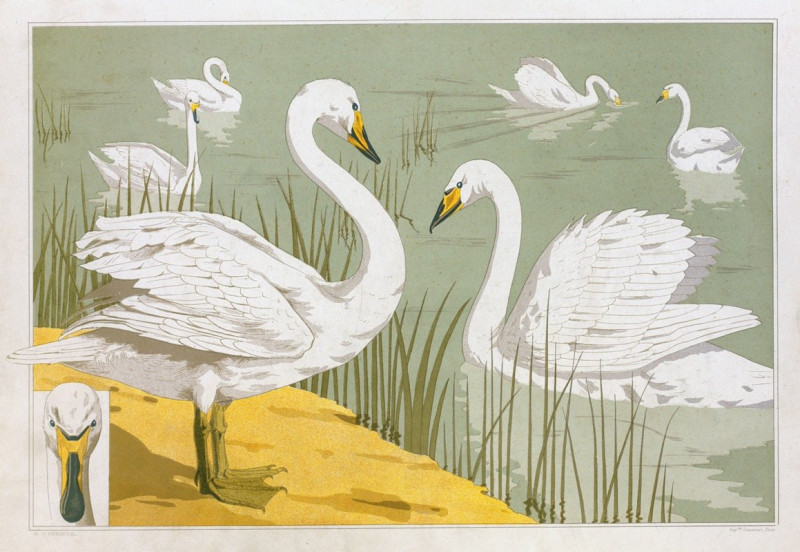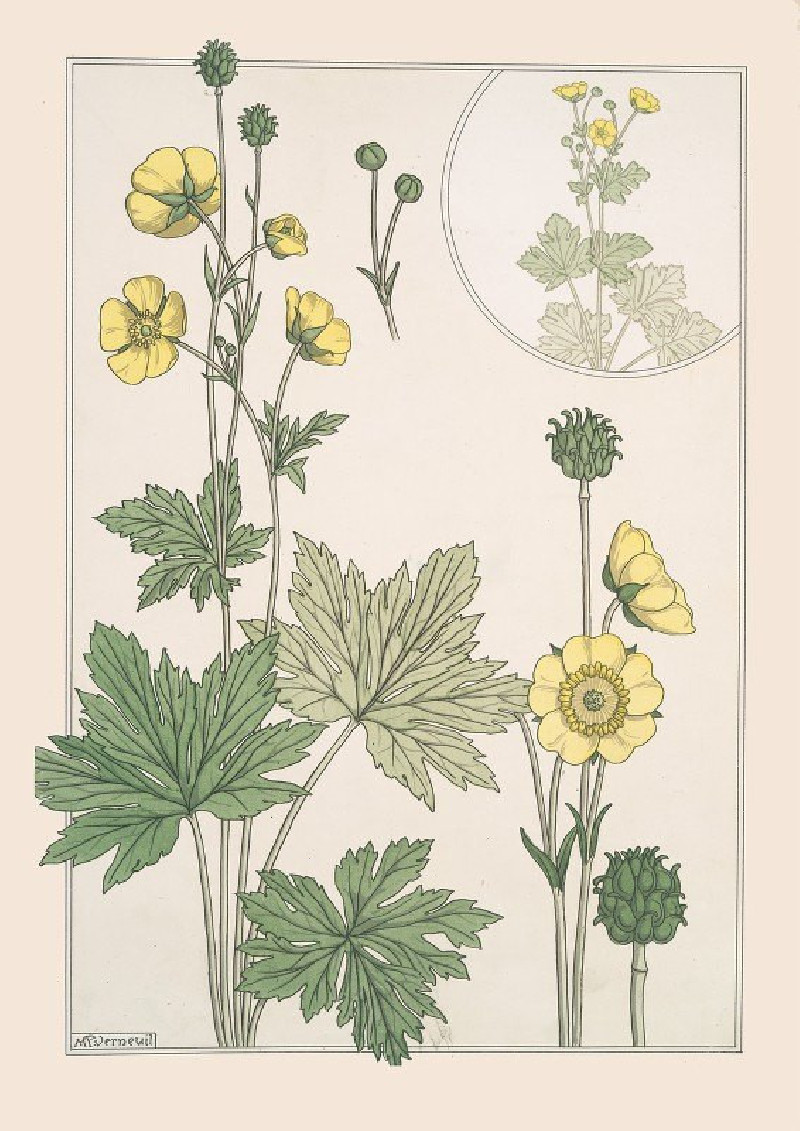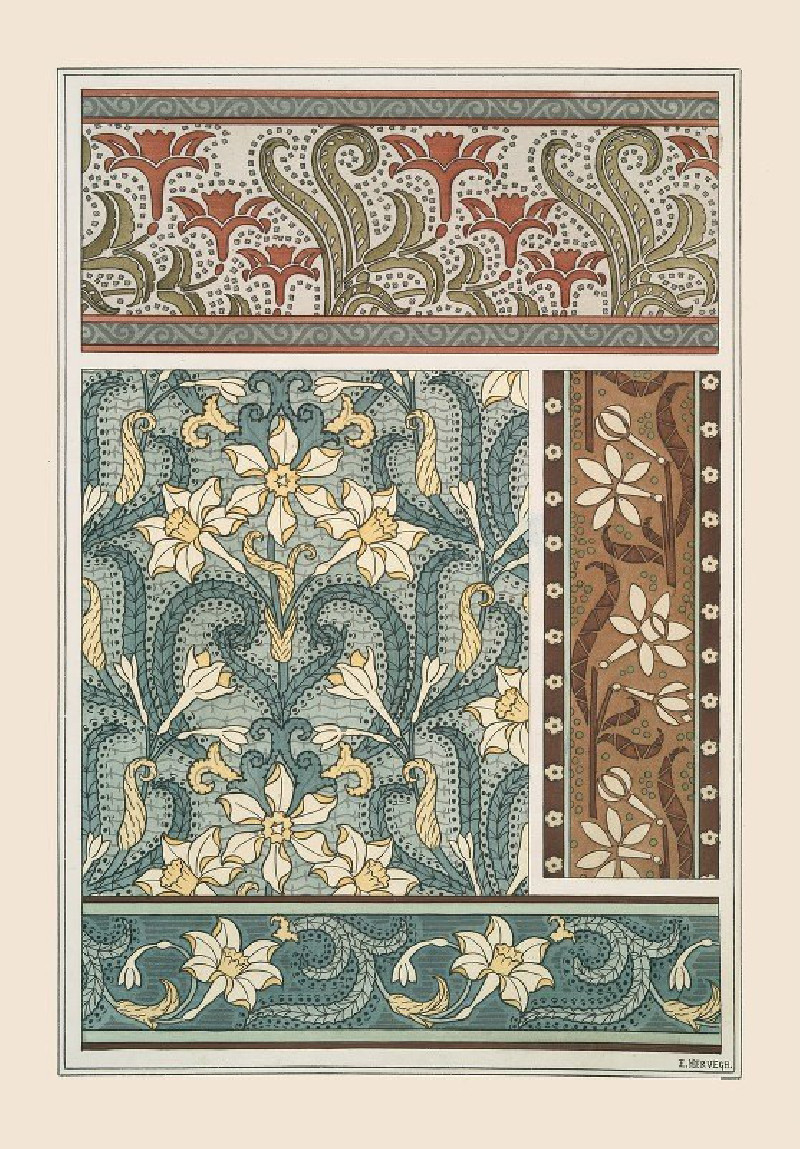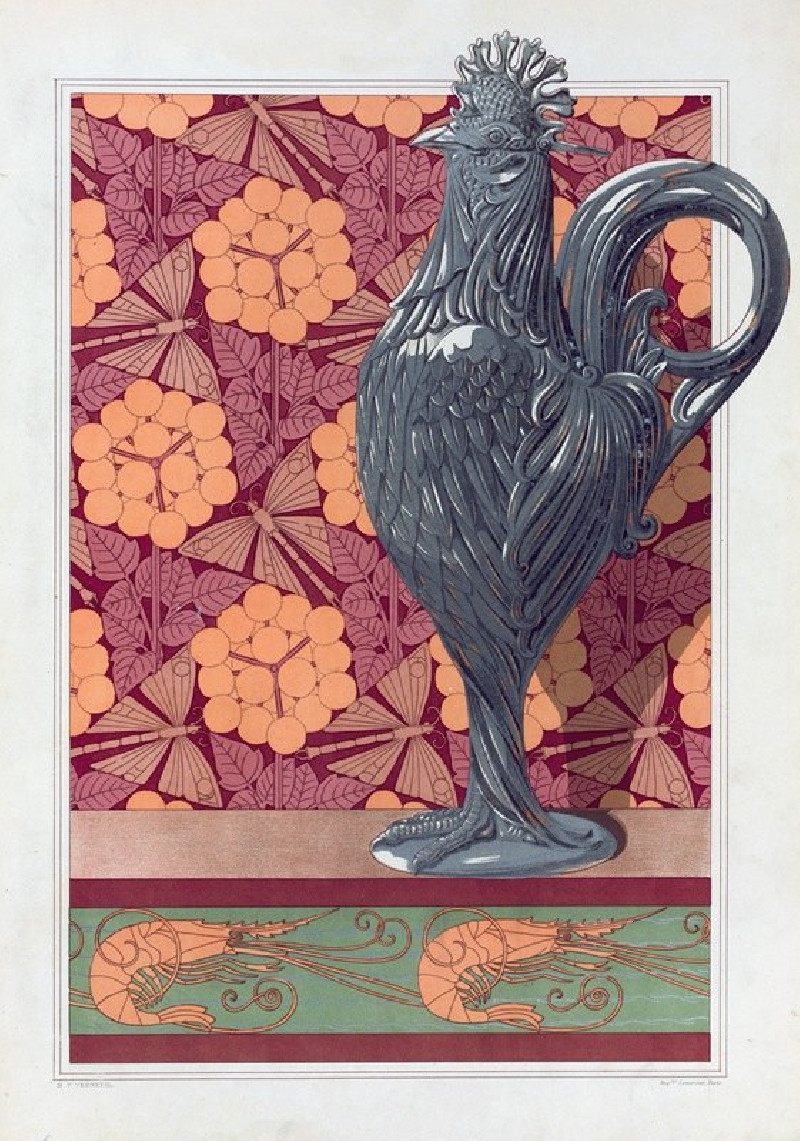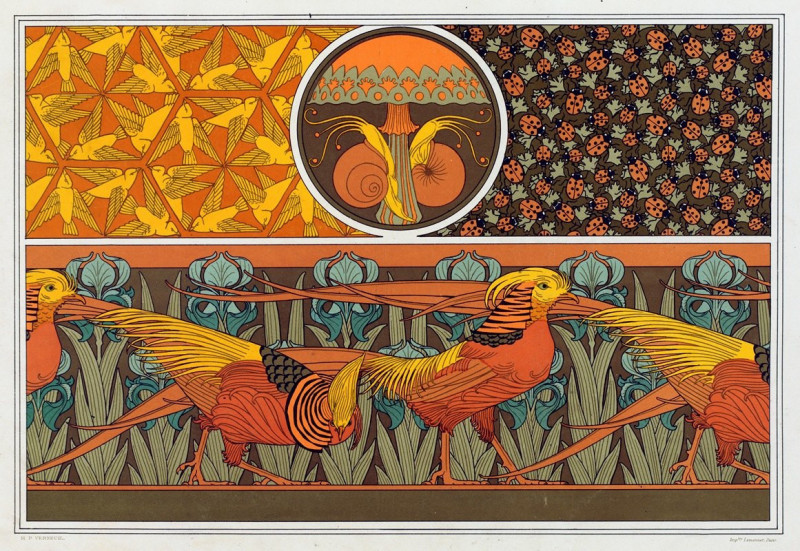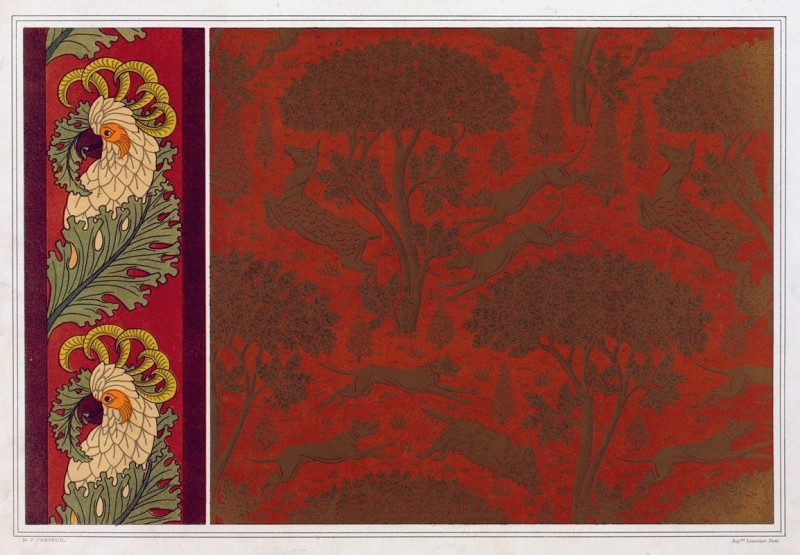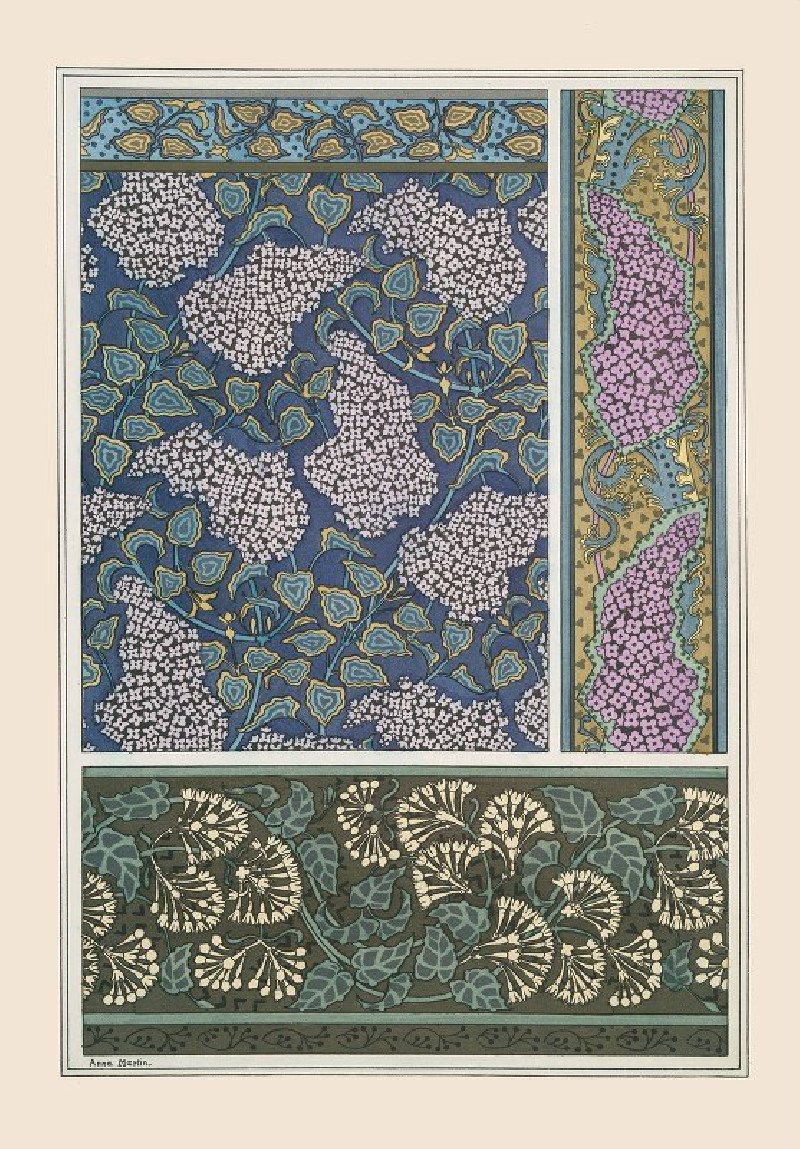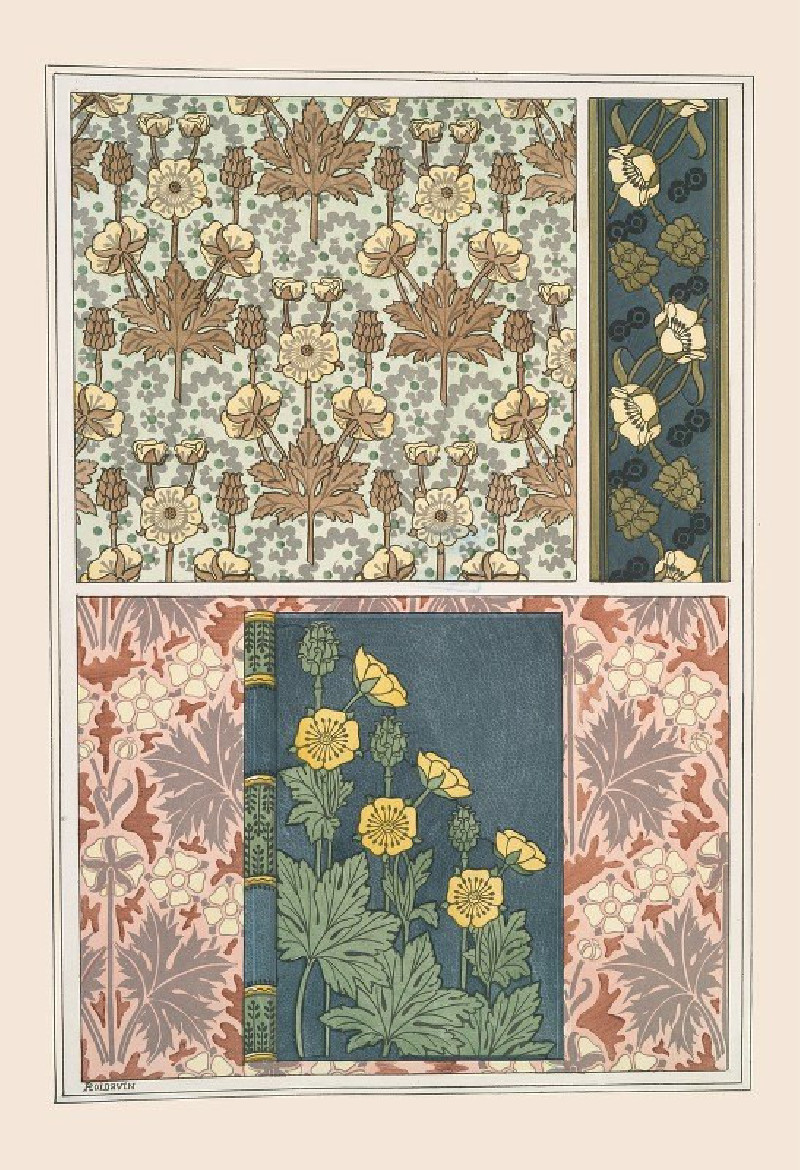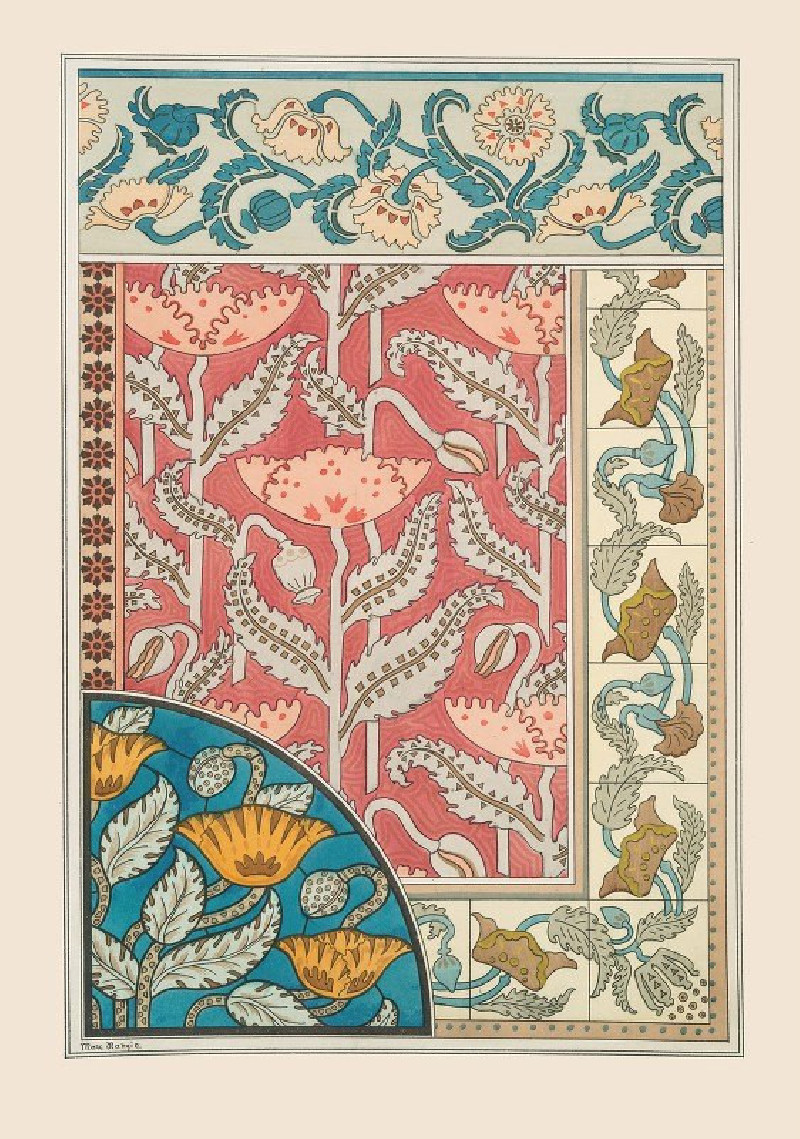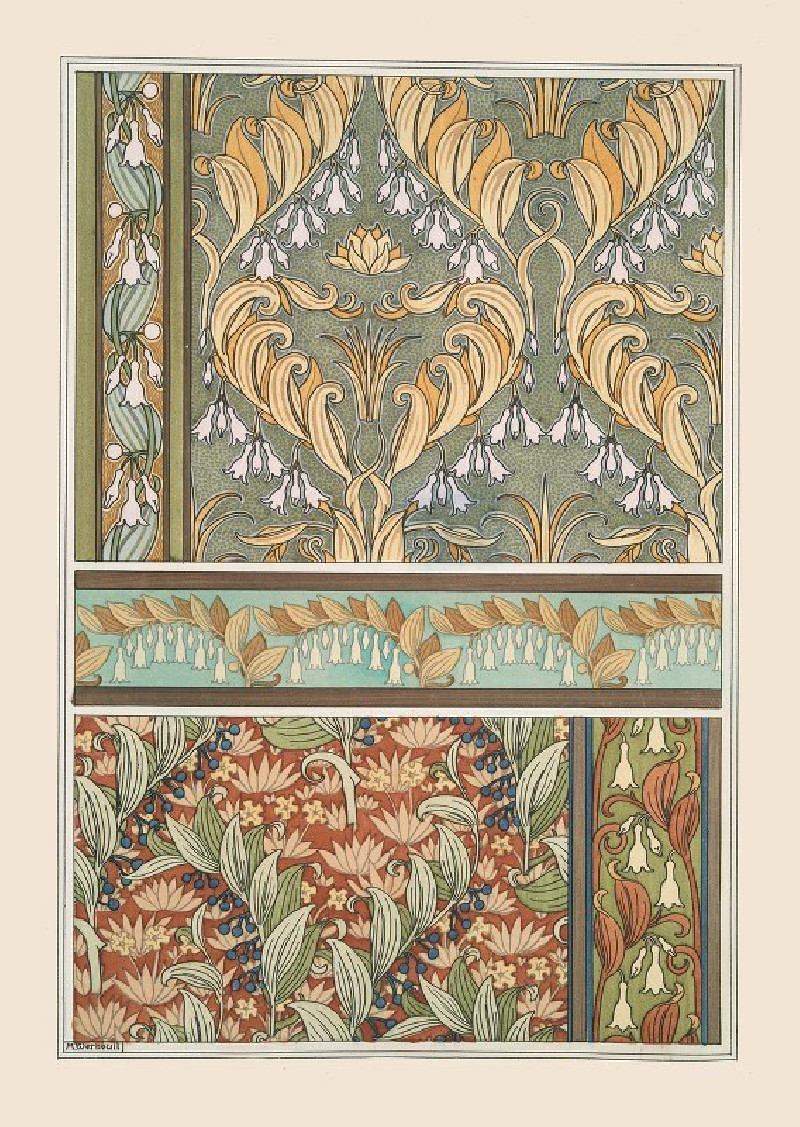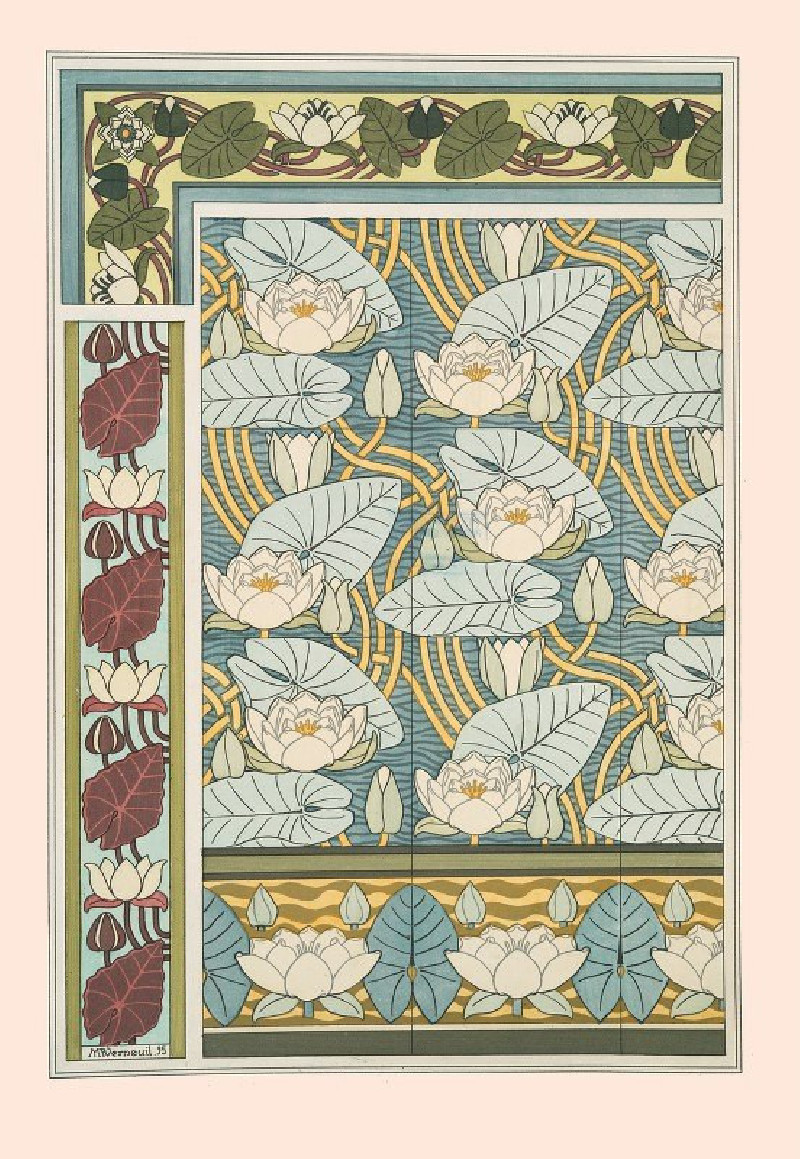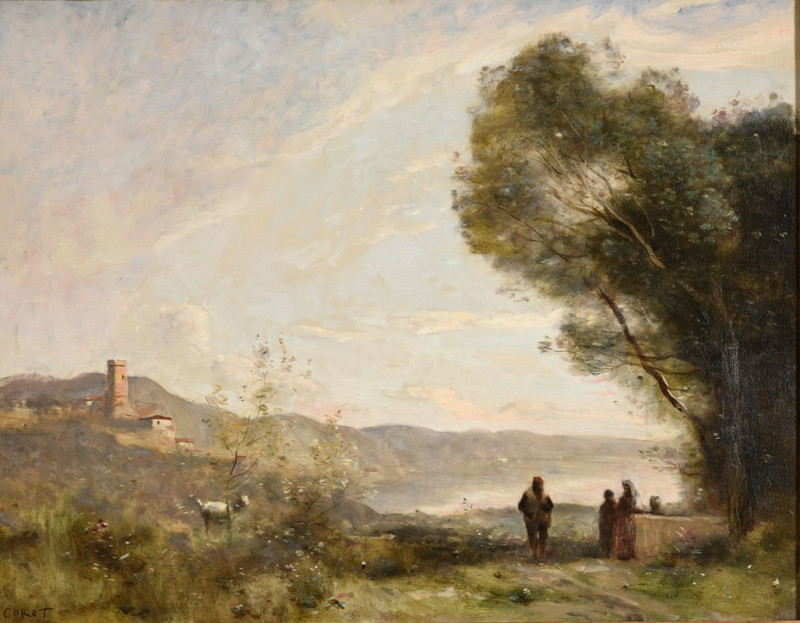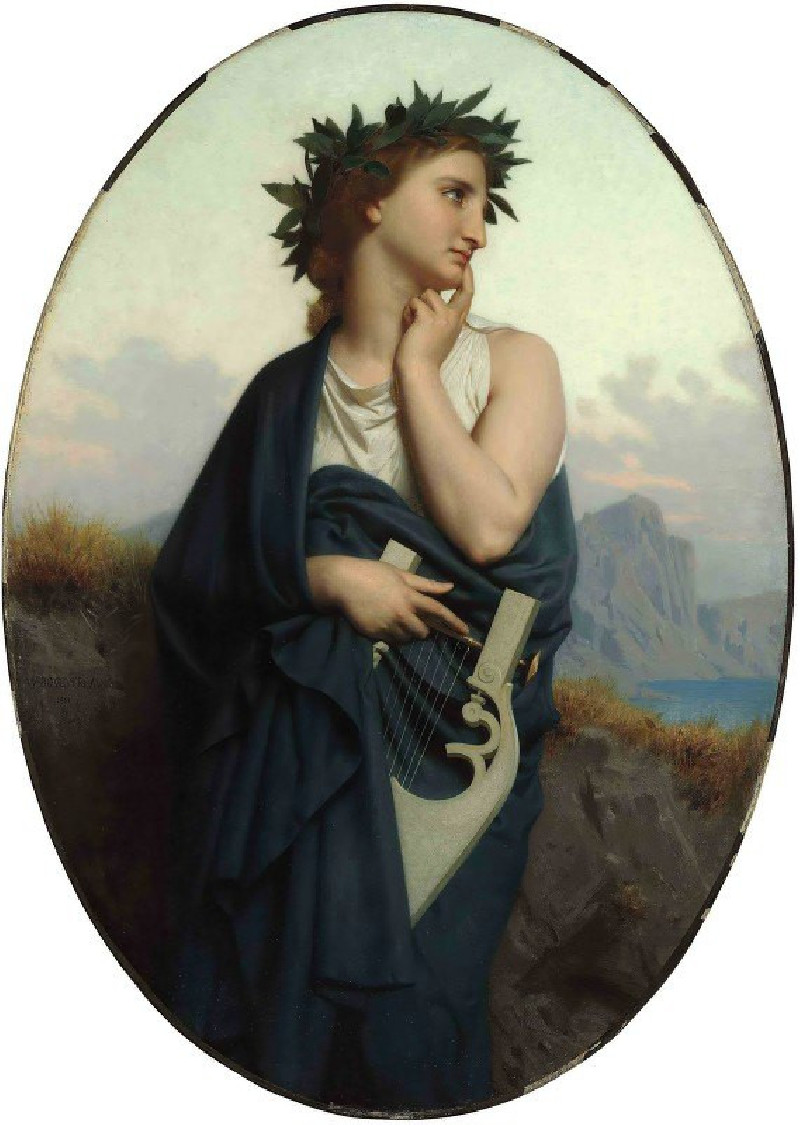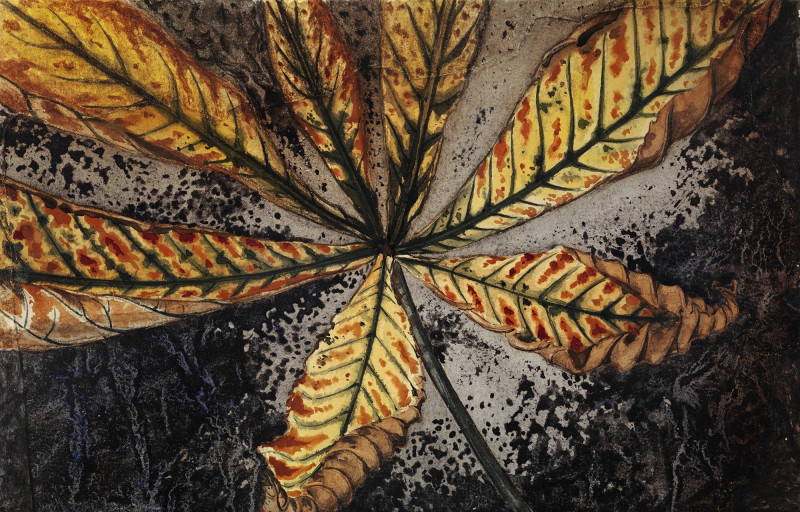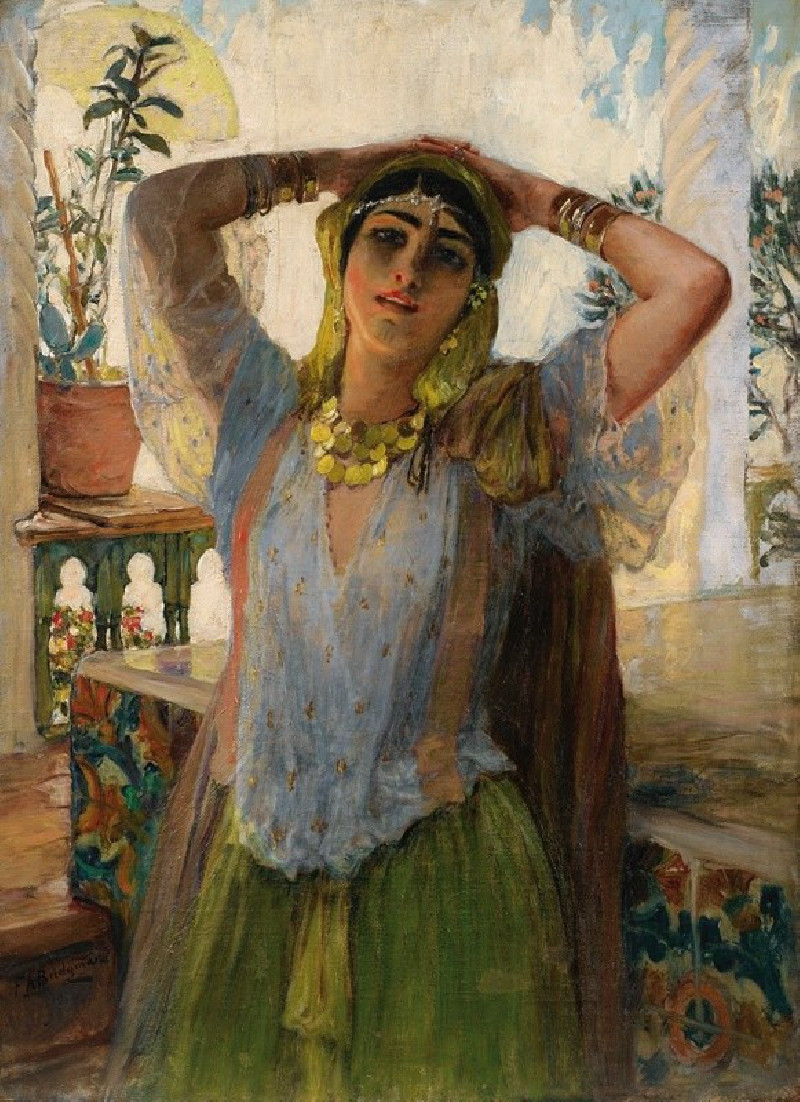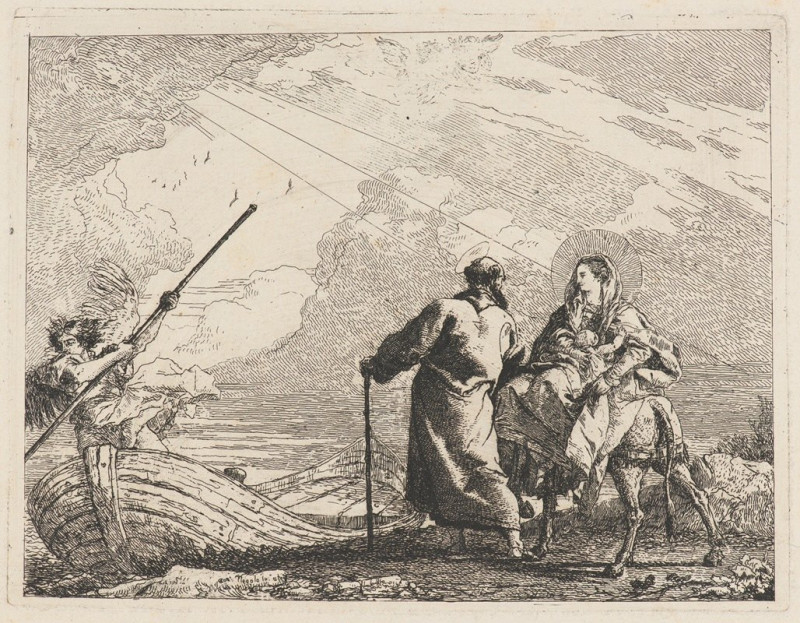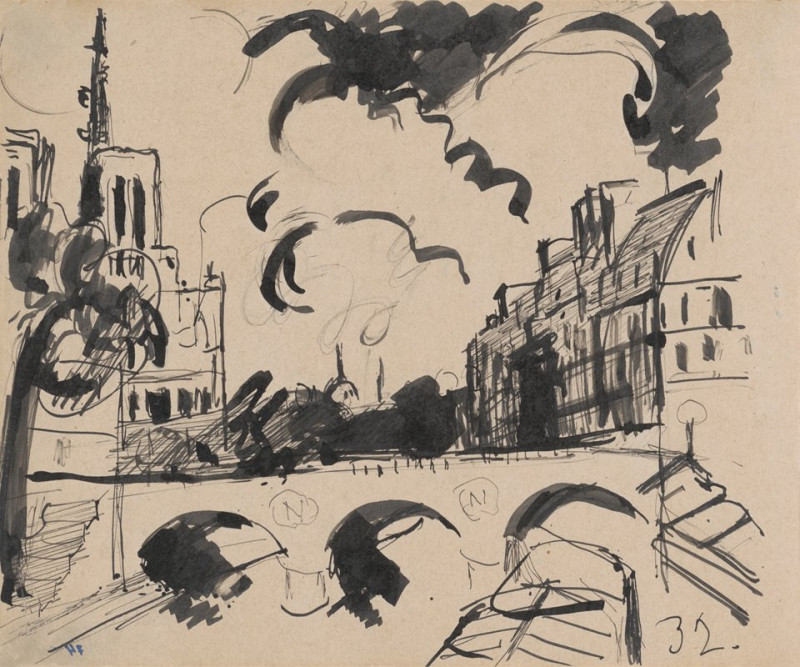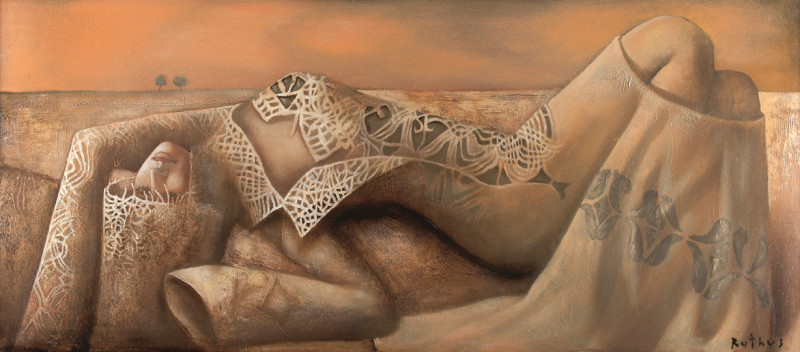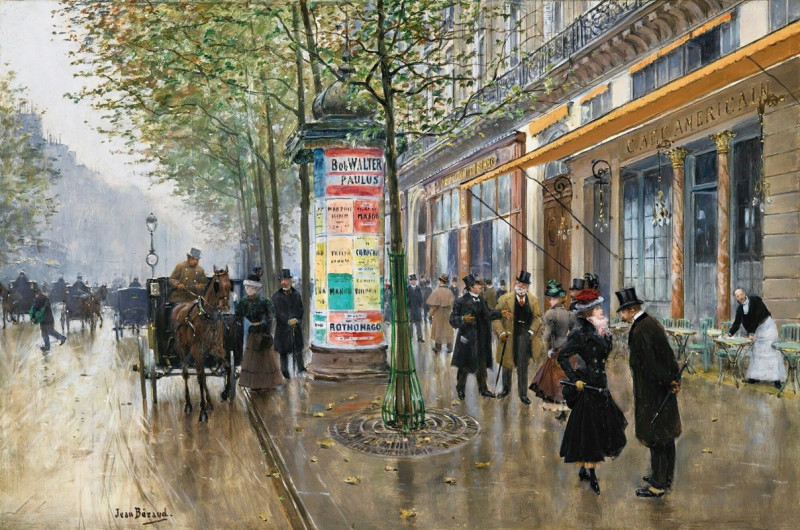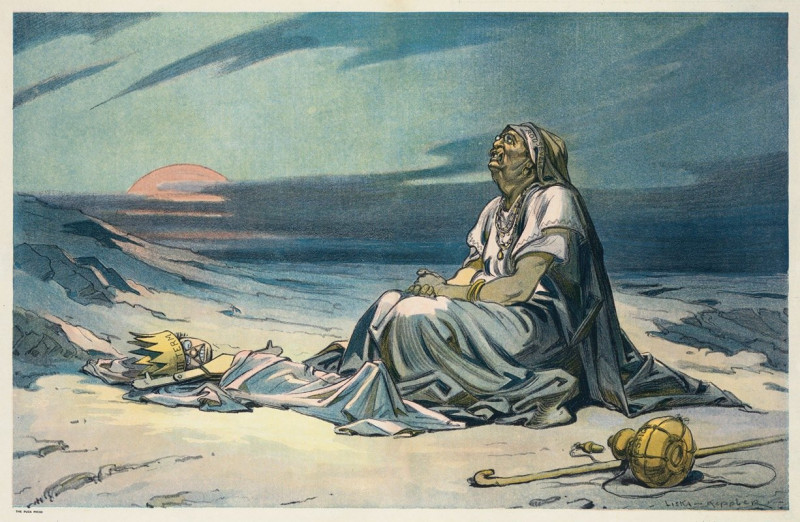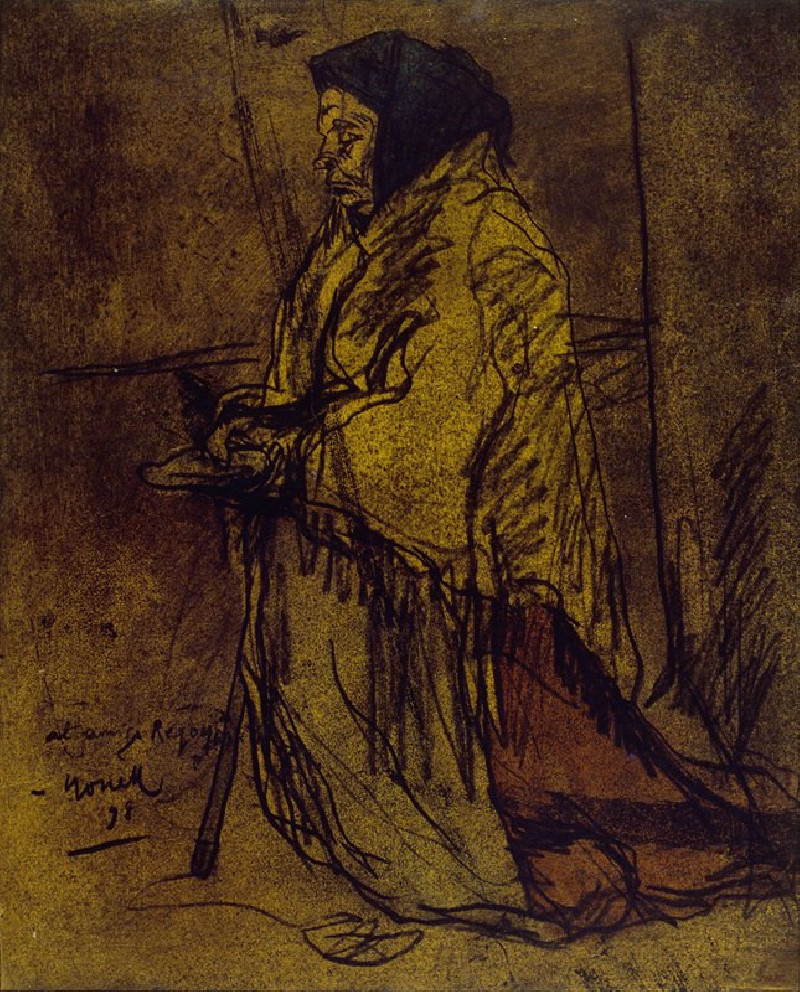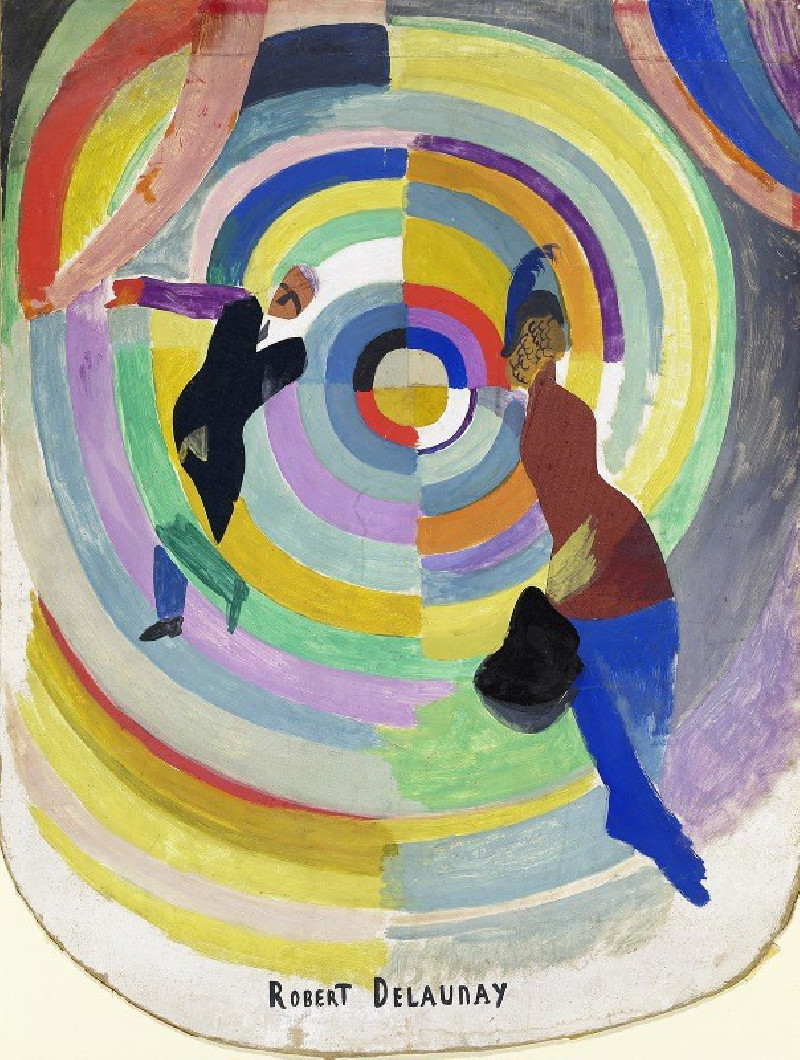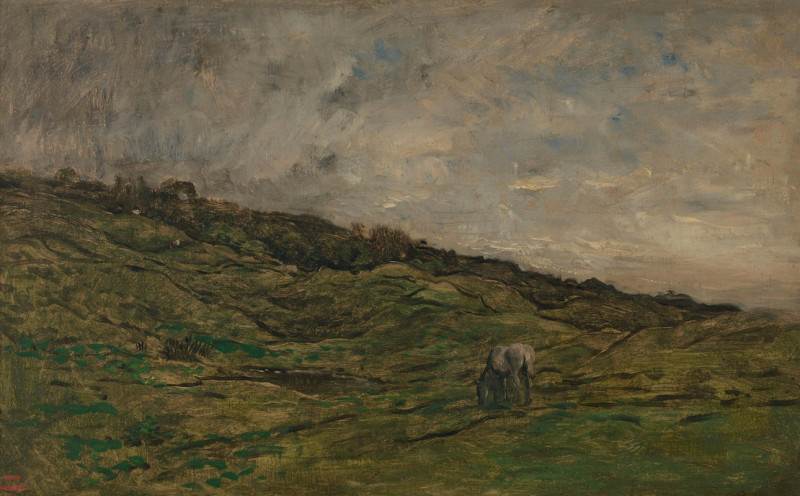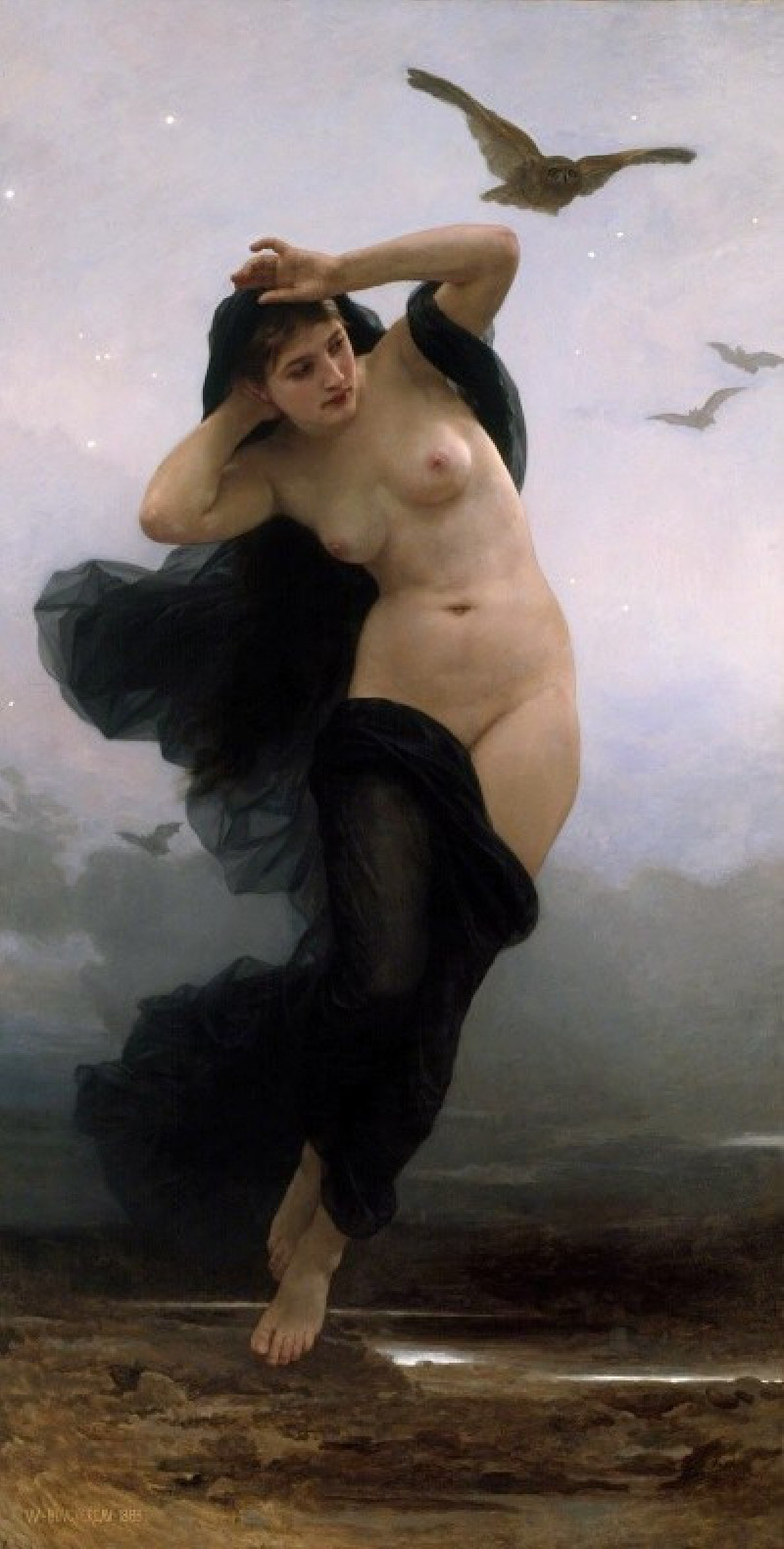Capucine 3 (1896)
Technique: Giclée quality print
Recommended by our customers
More about this artwork
Experience the enchanting world of Maurice Pillard Verneuil's *Capucine 3*, a striking example of Art Nouveau design that captivates with its intricate patterns and harmonious colors. This beautiful composition is divided into three main sections, each offering a unique visual delight inspired by nature.The largest section features a vibrant array of flowers, rendered in a palette of soft blues, rich pinks, and warm yellows. These blooms are intertwined with delicate green foliage, creating an interplay of colors that breathes life into the canvas. The detailed depiction of each flower showcases Verneuil's precise attention to the nuances of natural forms.Below this floral tapestry, a circular motif presents a serene pond scene. Graceful white water lilies float on a textured blue background, while green lily pads spread across the tranquil water surface. This segment evokes a sense of peacefulness and reflects Verneuil's skill in using natural motifs to convey beauty and calmness.Flanking the circular water scene is a vertical panel featuring a darker, more subdued color scheme. This section depicts an array of foliage and coral-like forms in deep greens and orange, creating a contrast with the brighter elements of the main panel. This darker strip adds depth and complexity to the artwork, demonstrating Verneuil's prowess in color contrast.*Capucine 3* is not just a visual feast; it is a testament to the Art Nouveau movement's love for nature, color, and detailed craftsmanship. Maurice Pillard Verneuil's work invites viewers to pause and appreciate the subtleties of nature’s artistry translated through human creativity.
Delivery
Returns
Maurice Pillard Verneuil was a French artist and decorator in the Art nouveau movement. He was born in Saint-Quentin, France. Maurice Pillard Verneuil learned his trade from the Swiss designer Eugène Grasset. Maurice Pillard Verneuil then went on to become a well-known artist and designer. He was inspired by Japanese art and nature, particularly the sea. He is known for his contribution to the art deco movement and, in particular, his use of bold, floral designs in ceramic tiles, wallpapers and other furnishing textiles.

